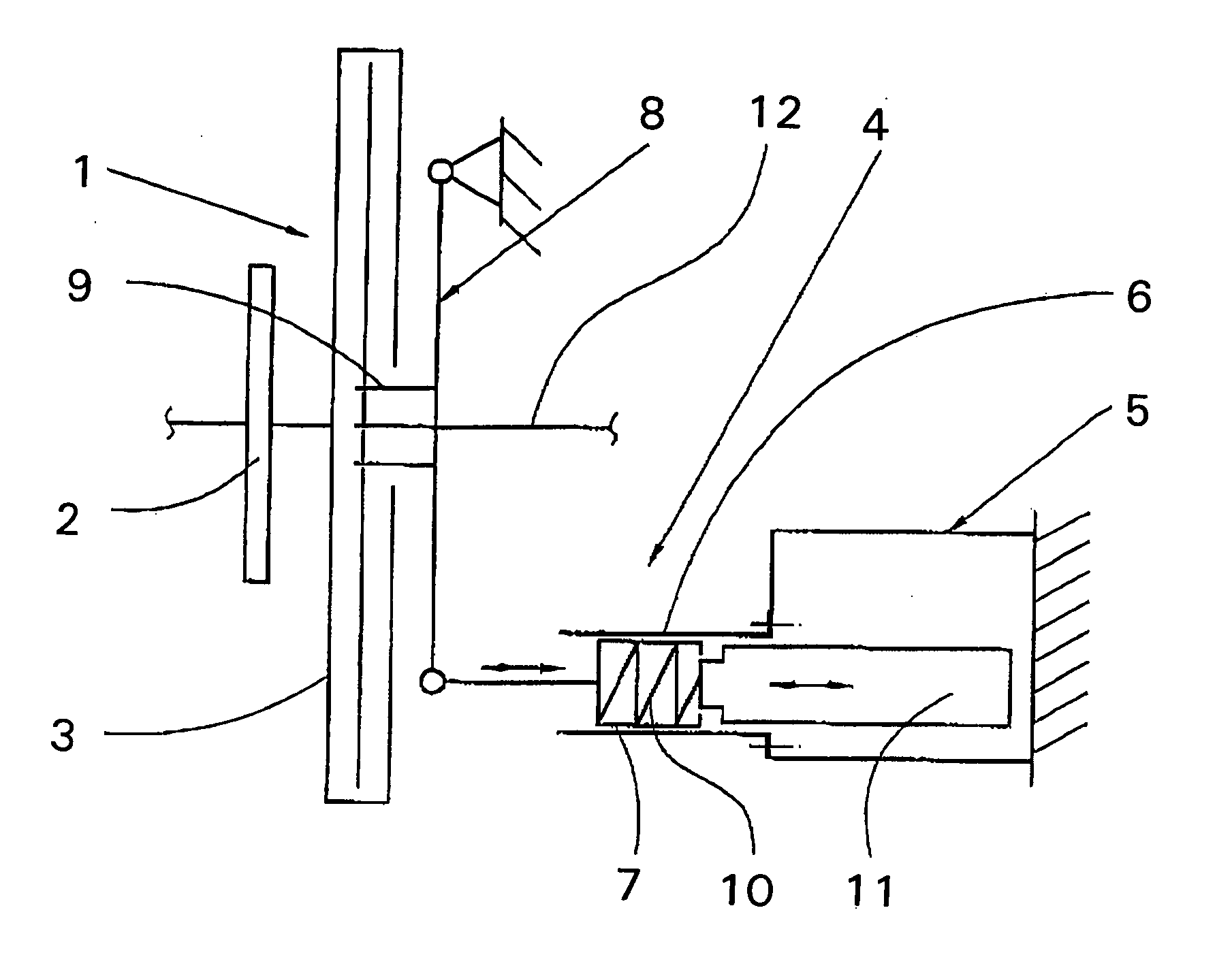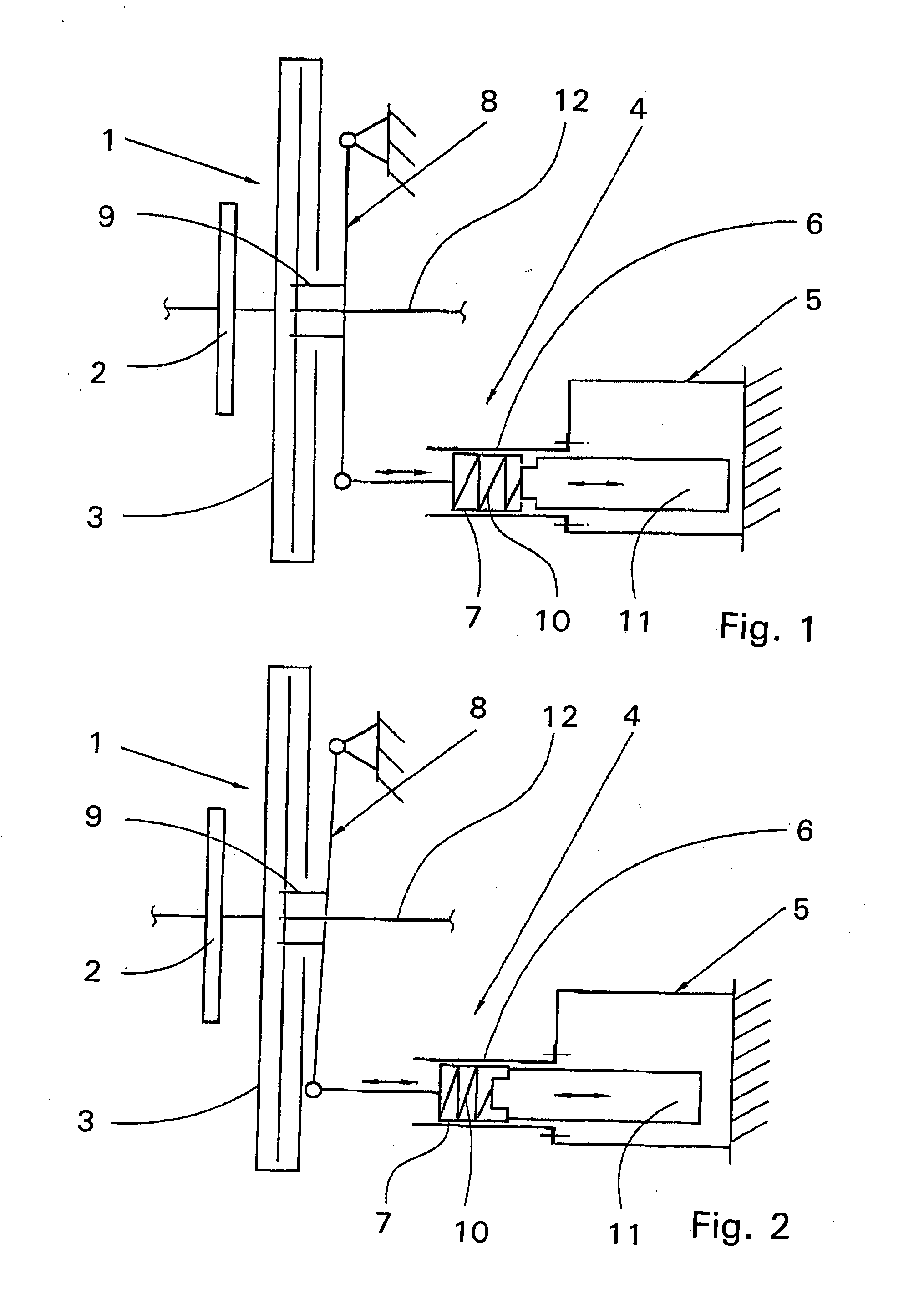Clutch
a technology of clutches and components, applied in the field of clutches, can solve the problems of affecting or even damaging the component, unable to prevent the vibration produced or transmitted, and unable to prevent the vibration of the componen
- Summary
- Abstract
- Description
- Claims
- Application Information
AI Technical Summary
Benefits of technology
Problems solved by technology
Method used
Image
Examples
Embodiment Construction
[0017]FIG. 1 shows a clutch 1 in the form of a friction clutch in an engaged position, which is situated in the power train of a motor vehicle between a combustion engine and a transmission. The basic design of such a clutch is well known so that only an explanation of the individual components of the clutch is necessary.
[0018] To begin with, the clutch 1 consists of a clutch housing 3 connected to a fly wheel 2 of the combustion engine, a torque-proof pressure plate, which is capable of axial movement within the clutch housing 3 and a diaphragm spring placed between the clutch housing and the pressure plate. The diaphragm spring comes to bear on both the clutch housing 3 and the pressure plate, the pressure plate being pretensioned in the direction of the fly wheel 2 against a clutch disk with friction lining. This side of the clutch is non-rotatably connected to a transmission input shaft 12.
[0019] A disengaging device 4 is attached to the diaphragm spring, which acts on the rad...
PUM
 Login to View More
Login to View More Abstract
Description
Claims
Application Information
 Login to View More
Login to View More - R&D
- Intellectual Property
- Life Sciences
- Materials
- Tech Scout
- Unparalleled Data Quality
- Higher Quality Content
- 60% Fewer Hallucinations
Browse by: Latest US Patents, China's latest patents, Technical Efficacy Thesaurus, Application Domain, Technology Topic, Popular Technical Reports.
© 2025 PatSnap. All rights reserved.Legal|Privacy policy|Modern Slavery Act Transparency Statement|Sitemap|About US| Contact US: help@patsnap.com


